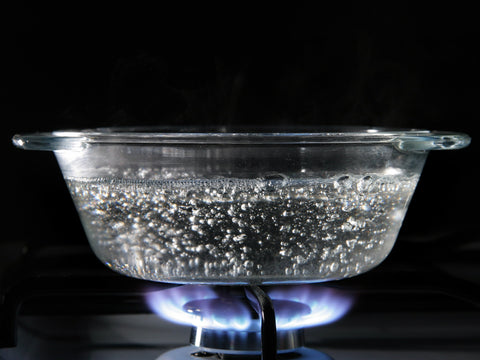The recent coronavirus outbreak has greatly increased people's awareness of environmental hygiene and disinfection.
Now, discuss with you four common disinfection methods, and check their usage principles and precautions.
First, the high temperature.

High temperature disinfection has always been a method of disinfection passed on by word of mouth. Therefore, when dining out, we will first use boiling water to disinfect the tableware. Finally, is there any scientific basis to support this conventional wisdom?
The answer is yes! The virus is sensitive to heat, and microorganisms will die due to protein denaturation in a high temperature environment beyond their own tolerance.
But please note that this requires two premises: temperature and time. The new coronavirus needs to be stored in 56°C water for about 30 minutes before it can be eliminated. Moreover, not all objects can be heated and placed in boiling water, so high-temperature disinfection does not seem to be a comprehensive disinfection method.
The second and most commonly used method is alcohol disinfection.
Recently, everyone is rushing to buy various alcohol disinfection products, such as alcohol hand sanitizer, alcohol disinfectant wipes and alcohol disinfectant sprays. Finally, can all the alcohol disinfection products in the workshop achieve the disinfection effect?
Indeed, alcohol has a high degree of volatility, which can dehydrate and solidify microorganisms, and ultimately denature bacterial proteins to achieve disinfection effects. However, not every concentration of alcohol can achieve the same effect. The alcohol concentration is preferably 75%. It can simultaneously have protein coagulation and osmosis effects to achieve a thorough sterilization function.
However, we must be aware of a small misunderstanding. The higher the alcohol concentration, the better the disinfection effect. High-concentration alcohol (so-called 95% alcohol) can quickly solidify the protein on the surface of the bacteria, but only to the outer layer. For some bacteria, their interior is still active, so it is equivalent to not killing the bacteria.
Third, chlorine-containing disinfectants.
![XGERM PRO - COMPACT PHONE UV SANITIZER [LED VERSION] - Enjoy stronger UV sanitization with the LED version of XGerm Pro. LED UV lights can help you to kill all the germs on your personal items!](https://cdn.shopify.com/s/files/1/2532/7020/files/sanitizing_large.jpg?v=1583482377)
The principle of disinfection and sterilization is that it contains sodium hypochlorite, which can invade microorganisms and oxidize with nucleoprotein, thereby inactivating bacteria and viruses. Therefore, you can usually use diluted disinfectant to clean the house, which can really keep the house clean and reduce the chance of bacteria breeding.
However, many powerful disinfectants can be very irritating, and high concentrations may cause harm to the human body. Therefore, the higher the concentration of the disinfectant, the better the effect.
The last one is the ultraviolet disinfection lamp, which is a relatively new disinfection method.![XGERM PRO - COMPACT PHONE UV SANITIZER [LED VERSION] - Enjoy stronger UV sanitization with the LED version of XGerm Pro. LED UV lights can help you to kill all the germs on your personal items!](https://cdn.shopify.com/s/files/1/2532/7020/files/XGerm-pro-phone-sanitizer-uv-lamp-sterilizer-stereilization-disinfection-iphone-11-wm_grande.jpg?v=1585042868)
The principle is to destroy the molecular structure of DNA (deoxyribonucleic acid) or RNA (ribonucleic acid) in microbial cells with appropriate wavelengths of ultraviolet light, leading to the death of growing cells and/or the death of regenerative cells, and achieving sterilization. Ultraviolet disinfection is a kind of The physical method does not add any substance to the object, does not cause any damage to the material, and has no side effects on the human body, so it is a more comprehensive disinfection method.
![XGERM PRO - COMPACT PHONE UV SANITIZER [LED VERSION] - Enjoy stronger UV sanitization with the LED version of XGerm Pro. LED UV lights can help you to kill all the germs on your personal items!](https://cdn.shopify.com/s/files/1/2532/7020/files/XGerm_grande.jpg?v=1585814531)
LEXUMA's new multifunctional portable UV sterilizers XGerm and XGerm PRO can completely eliminate bacteria on most objects and are easy to use. They are suitable for busy modern people and are worth a try.
I hope this article can help everyone gain a deeper understanding of various disinfection methods.




![XGERM PRO - COMPACT PHONE UV SANITIZER [LED VERSION] - Enjoy stronger UV sanitization with the LED version of XGerm Pro. LED UV lights can help you to kill all the germs on your personal items!](https://cdn.shopify.com/s/files/1/2532/7020/files/alcohol_large.png?v=1583482204)